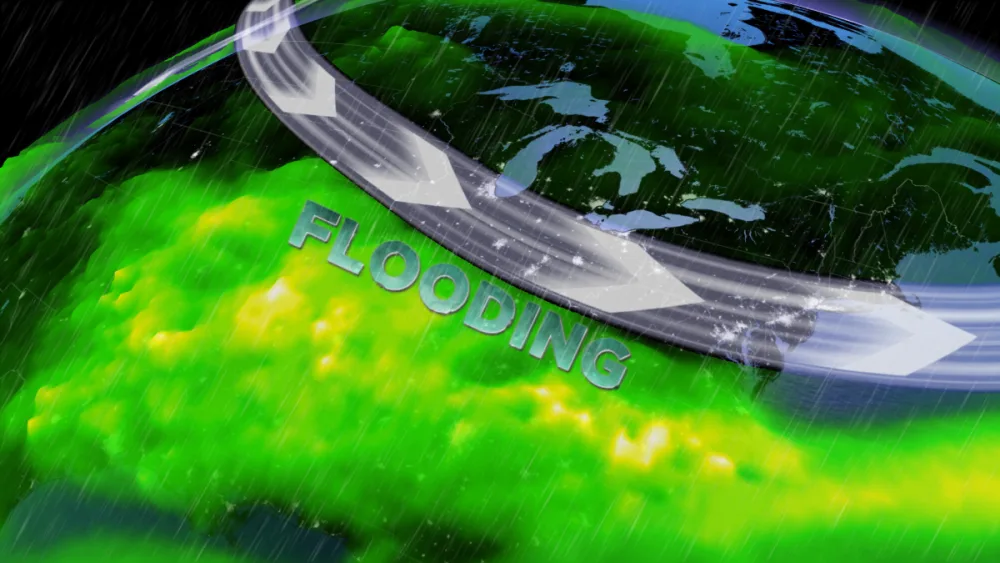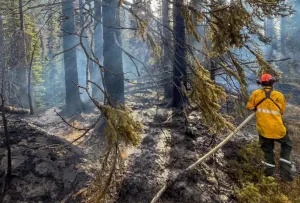
‘Epic’ disaster: an inside look at this week’s catastrophic floods
The same pattern that’s kept southern Ontario unusually dry in July is responsible for the catastrophic flooding south of the border this week.
Dozens of people died this week as historic floods swept through portions of the southern United States. The worst flooding struck the hollows of eastern Kentucky, a mountainous region unaccustomed to sustained tropical downpours like the torrents witnessed this week. Here’s an inside look at how the atmosphere churned out these catastrophic deluges.
MUST READ: Everyone needs a home emergency kit. Here’s how to stock yours
Toronto’s dry spell is linked to Kentucky’s catastrophic flooding
The same pattern that brought unrelenting rainfall to parts of the United States this week is also partially responsible for the unusual midsummer dry spell we’ve seen across portions of Central Canada.
Dry grass and wilted shrubs are an ever-present reminder of the relative lack of rainfall we’ve seen across places like southern Ontario in recent weeks.
Toronto would typically see about 75 mm of rain in an average July. So far this month, the city’s international airport has only seen about 44 mm of rain—just 58 percent of average.
Where did all the rain go? Look at the pattern south of the border for a major piece of the puzzle.

A large ridge of high pressure over the southeastern United States has kept this part of the world very warm and grossly humid over the past month. This ridge also acts like an atmospheric dam, gathering up tropical moisture flowing northward from the Gulf of Mexico and trapping it over the southeastern states.
As a result, we haven’t had many opportunities for deep moisture to flow over southern Ontario and deliver our much-needed rains.
Unfortunately, that pent-up moisture has fuelled persistent thunderstorms over places like St. Louis, Missouri, and eastern Kentucky, two areas that saw tremendous flooding this past week.
WATCH: Similar floods in Europe in 2021 were likely enhanced by climate change
Kentucky suffers from some of its worst flooding in recent memory
A boundary stalled over Kentucky on the evening of Wednesday, July 27, allowed persistent thunderstorms to develop and thrive in the moist air pooled up over the region. Thunderstorms had a vast reserve of atmospheric moisture to tap into, and these juicy storms kept moving over the same communities for hours at a time.
Mind-boggling rainfall totals piled up by the end of the torrent. Some communities in the region saw more than 250 mm of rain by Thursday morning. The rainfall had an immediate and devastating impact on communities stuck beneath the thunderstorms.

Water levels along the North Fork Kentucky River in the town of Whitesburg surged at a breathtaking pace as rains gushed into the hills that make up the eastern third of Kentucky.
The river’s previous all-time record crest at Whitesburg occurred on January 29, 1957, topping out at 4.48 m (14.70 ft). The flood of 1957 was a generational tragedy for the region.
This week’s flooding surged the river to at least 6.37 m (20.91 ft) before the gauge stopped reporting.
Floodwaters rushed into neighbourhoods before many residents had a chance to react. Rushing currents swept away vehicles and homes alike, leading to significant loss, injuries, and fatalities.
“We are currently experiencing one of the worst, most devastating flooding events in Kentucky’s history,” Governor Andy Beshear said in a state of emergency declaration the morning of the flooding.
At least 25 people were confirmed killed by the floods as of Saturday afternoon, according to a statement issued by Gov. Beshear’s office, and the total is expected to rise as those who are unaccounted for are found amid the debris.
St. Louis shatters all-time daily rainfall record
Two days before flooding rains inundated eastern Kentucky, a major city on the Mississippi River saw its own historic deluge.
On Tuesday, St. Louis, Missouri, recorded the most rain it’s ever seen in a single day. The city’s international airport saw 219.4 mm (8.64 in.) of rain between July 25 and 26, smashing the previous 106-year-old record by leaps and bounds, the city’s National Weather Service (NWS) office reported in a summary of the event.

(Infographic courtesy of NWS St. Louis/NOAA.)
An all-too-familiar situation played out across the St. Louis metro area in the aftermath of the torrential downpours. Widespread flooding shut down major thoroughfares and inundated neighbourhoods, requiring emergency officials to perform water rescues throughout the region.
One person died in the St. Louis floods after water overtook his vehicle, according to the NWS summary.










